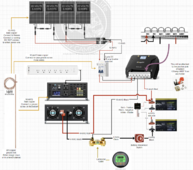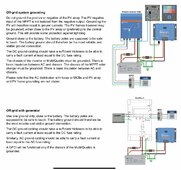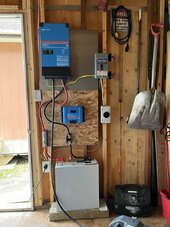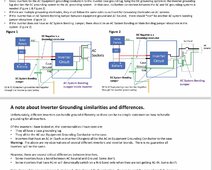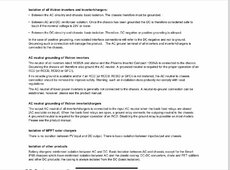I am designing a 48V solar system for my off-grid cabin. I am using a Victron charge controller and Multiplus II.
I have a question about grounding. I have looked at many resources but my head is spinning as it seems some of the information is inconsistent. I am hoping someone can set me on the right path.
My plan is to ground the solar panel frames to a grounding rod near the array [Grounding Rod #1]. I will NOT attach the solar array negative conductor to this grounding rod.
From the array, I will run positive and negative conductors(but not a ground wire) to the cabin. Inside the cabin, at the DC negative bus bar I will have a bond with a ground wire that will go to a grounding rod located at the cabin [Grounding Rod #2].
On the AC side, at the inverter output, I will bond the AC output ground to the DC negative bus bar above. I will also ground the metal frames of the charge controller and inverter to this ground.
Is this plan correct?
I have a question about grounding. I have looked at many resources but my head is spinning as it seems some of the information is inconsistent. I am hoping someone can set me on the right path.
My plan is to ground the solar panel frames to a grounding rod near the array [Grounding Rod #1]. I will NOT attach the solar array negative conductor to this grounding rod.
From the array, I will run positive and negative conductors(but not a ground wire) to the cabin. Inside the cabin, at the DC negative bus bar I will have a bond with a ground wire that will go to a grounding rod located at the cabin [Grounding Rod #2].
On the AC side, at the inverter output, I will bond the AC output ground to the DC negative bus bar above. I will also ground the metal frames of the charge controller and inverter to this ground.
Is this plan correct?



